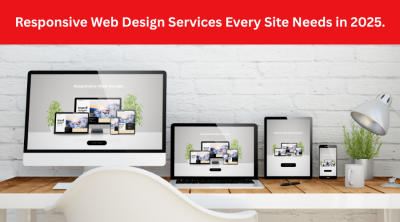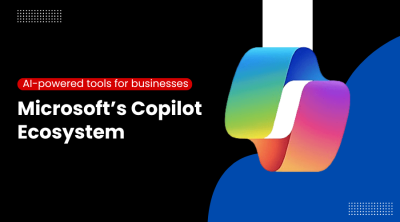Front-End Frameworks Comparison: React vs Vue vs Svelte for Your Next Project

If you're planning a new web project in 2025, you’ve probably found yourself typing "front-end frameworks comparison" into Google more than once.
Choosing the right one can feel like picking a favorite movie when you're a film student. Each has its flair, fan base, and purpose.
In this blog, we’ll break down the big three front-end frameworks: React, Vue, and Svelte, in a real-world way to help you make the right call for your next web adventure.
We’ll talk about performance, flexibility, learning curves, and what actually makes sense in today’s world of front-end development trends.
Spoiler: there’s no single winner, but there is a right choice for you.
React vs Vue vs Svelte: A Friendly Showdown
Let’s put our contenders side by side in this front-end frameworks comparison. Here's a quick cheat sheet to help you get the lay of the land:

Why is React's Demand Still High in 2025?
Even after 12 years of being released, React's popularity is still the same. It’s still experts’ first choice when it comes to flexibility and scalability.
Why choose React?
Large community ensures better support
Tons of third-party libraries
Great for large-scale applications
That said, it's not always smooth sailing. JSX is powerful, no doubt, but it can throw off beginners at first. It's like learning a new dialect of JavaScript. And things get a little tangled in the managing state unless you're using tools like Redux or Context API.
React’s popularity in 2025 still dominates the charts for a reason.
Reminder: With great power comes a bit of a learning curve and a setup that demands a hands-on approach.
Vue.js: Simplicity and Power, Two-in-One Combo Pack
Vue is that classmate who is approachable, friendly, and incredibly smart. Its templating system is intuitive, and its documentation is a dream. The biggest advantage of Vue is its gentle learning curve and flexibility.
Why choose Vue?
Easier for beginners
Clear structure with single-file components
Built-in solutions for routing and state
When compared to React, Vue’s ecosystem is less overwhelming, making it the perfect choice for beginners. And the bonus? It’s still robust enough for building full-scale apps. Its two-way data binding and built-in directives make it ideal for dynamic content.
Svelte: The Fastest Kid on the Block
Svelte is the one to watch in this JavaScript frameworks comparison. Unlike React and Vue, it doesn’t use a virtual DOM. Instead, it compiles code at build time, making apps lightning fast. Think of it like a chef prepping everything before you arrive, so your meal’s ready in minutes.
Svelte performance benefits:
Smaller bundle size
Less boilerplate code
Built-in state management
But here’s the catch, smaller community, limited third-party tools, and not yet the corporate darling that React is.
2-Minute Guide to Choosing a Right Front-End Framework
Still stuck on choosing a front-end framework? Here are a few things to reflect on:
1. How complex is your project?
Large-scale = React
Mid-range = Vue
Lightweight or MVP = Svelte
2. What’s your team’s experience level?
New developers grow with Vue and Svelte.
Experienced teams will prefer React's customization.
3. How important is performance to you?
If performance is your priority, Svelte wins hands down.
4. How soon do you need to launch?
Faster MVPs are easier with Vue or Svelte.
And if you are looking for a full-service tech to handle IT infrastructure, check out Main IT Services.
Front-End Development Trends 2025
The 2025 web development is all about speed, minimalism, and being user-friendly.
Simple bundles with fast load times
Cleaner, simpler toolchains (Svelte is really making waves here)
The dominance of component-based UI
No compromise on clean code, and accessibility
Svelte is rapidly climbing up because of its compiler-first approach. Vue maintains its charm by staying lean and easy. React, meanwhile, is expanding into new areas with tools like React Server Components. Explore our web development services to find your perfect fit and stay ahead of the trends.
Our Opinion: The Best Front-End Framework
There’s no one-size-fits-all answer to this question. But here’s a breakdown:
If you want full control, scalability, and a huge support ecosystem, go with React.
If you want something that feels intuitive, is fast and doesn’t skip quality, choose Vue.
If you’re after cutting-edge speed and minimalism, pick Svelte.
TL; DR
Final Thoughts:
In the end, the best framework isn’t what everyone is running after or what's working for someone you know; it’s the one that fits your project, your team, and where you’re headed. For your massive ecosystem, it can be React or Vue when you are seeking simplicity or Svelte if you are looking for speed.
What matters most is that you're working in a time when front-end tools are strong, documentation is clear, and developer communities are genuinely helpful. So, choose what feels right, not what’s trending. Build something meaningful, have fun along the way, and trust yourself. You handle the vision, let us handle the development. Contact us today!
2025’s shaping up to be a fantastic year to code, enjoy it.





.png)





































Comments (0)